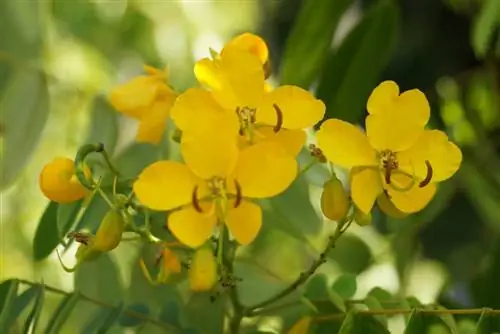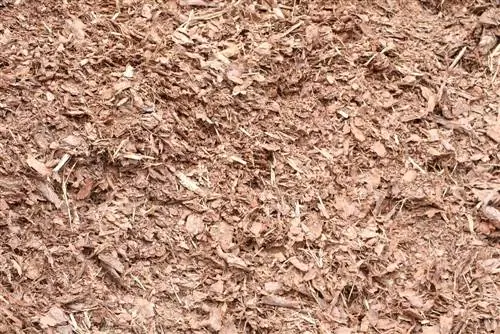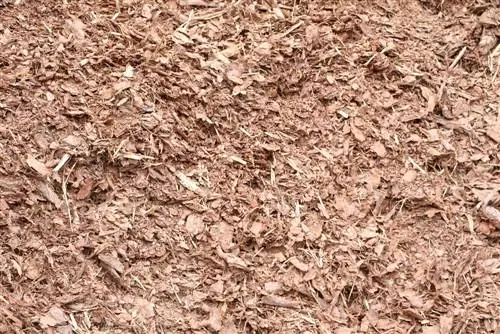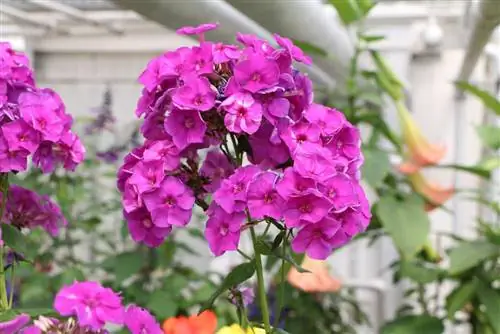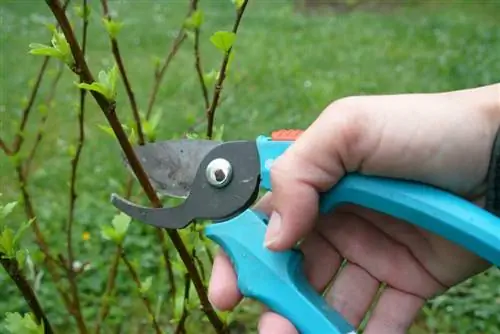- Author admin [email protected].
- Public 2023-12-17 03:39.
- Last modified 2025-01-24 12:45.
The spice bark is a very beautiful potted plant whose flowers are bright yellow and show their full splendor from May to October. This plant owes its German name to its intense scent, which has a very spicy note.
The plant, which comes from South America, is also known as Cassia floribunda and is generally considered to be very easy to care for, although it is available as a small stem or as a bush. To ensure perfect flowering, there are a few important points to consider in terms of care and location.
Optimal location
A location for the spice bark is often chosen on the balcony or on the terrace, where it can show its full splendor from the end of May and the following summer months. In order for this plant to produce numerous flowers, its location should have the following characteristics:
- full sun
- warm
- sheltered from the wind
A winter garden can also be considered as a location in the warm months, as sunlight can also shine in here. If the temperature is comfortable over the winter months, then the spice bark can bloom here all year round. However, the risk of aphid infestation then increases - so you should keep an eye out for them so that countermeasures can be taken immediately.
Care
When potting the cassia, it is important to make sure that rich potting soil is used. Afterwards it should be provided with a good liquid fertilizer at least once a week, especially in the months of April to the beginning of September, as this will help it develop very nicely. If you use too little fertilizer, the spice bark often indicates that the flowers are not developing, which then do not want to bloom properly.
Watering is particularly important in the warmer months, as it requires a lot of water to grow and the lush leaves also increase the water requirement. Under no circumstances should the ball of spice bark dry out, otherwise it would lose its foliage and thus much of its aesthetics. On very hot days, it is therefore recommended that you water the spice bark in the morning and evening - but you should avoid watering under the blazing sun, otherwise the evaporation of the water could lead to unsightly burns on the spice bark.
Especially with younger plants, you should repot them every 1 to 2 years and also replace all of the soil. For older plants, replacing the soil after 3 years is completely sufficient.
Cutting
This plant grows very tall quickly, which is why it should be shortened by a good third every spring. To ensure that the tendrils branch out beautifully, you can also trim the shoots regularly - the best way to do this is to follow your instincts and only trim the shoots where there are no visual losses.
Wintering

The cassia is not frost hardy, which is why it should definitely not spend the winter outdoors. It cannot tolerate temperatures below 5°C at all, which is why it should be moved to a bright winter quarters in good time if the weather conditions are appropriate. At temperatures of around 5 to 10°C, the risk of aphids is largely minimized, which is why many gardeners prefer to avoid spice bark as a permanent bloomer. Since the spice bark loses a large part of its leaves in winter, it needs significantly less water at this time than in the warm summer months. The exact water consumption depends on the brightness of the winter quarters, as it loses more leaves in darker locations and thus further reduces its water consumption. When watering, you should pay particular attention to ensuring that the soil does not dry out completely.
Propagation
The cassia can be propagated using its own seeds or semi-ripe cuttings. The seeds can be purchased all year round from specialist retailers or you can wait until autumn and grow new spice bark from the seeds of your own plant. When taking cuttings, it is important that the soil temperature is at least 15°C and that the soil is not too moist. To ensure good growth, the cuttings should also be trimmed several times.
Diseases
The spice bark cannot be described as very susceptible to diseases, but from time to time this type of plant is affected by pests or diseases. The following is particularly common in Cassia:
- an infestation of aphids
- a whitefly infestation
- Gray horse
In general, unfortunately, one can say (and also experience) that the spice bark is not only very popular with people. All sucking insects enjoy this plant. Neem meal, neem oil and other oil-containing products can be of great help here, especially when detecting the infestation early. With aphids, in most cases it helps completely if you remove them from the plant with a jet of water. Here you can proceed as follows with the spice bark:
- Cover the pot with a bag
- Tie the bag on the trunk
- Water the plant briefly in the shower
If hosing down is not enough, the spice bark can also be treated with soapy water. It is best to use curd soap for this, as it contains no perfume and therefore does not harm the cassia. One tablespoon of the soapy water is used per liter of water, which is then distributed very generously over the entire plant. The soapy water can also provide a good remedy for a whitefly infestation.
With gray mold, it only helps if the affected leaves and flowers are removed so that this disease does not spread any further.

The spice bark is a very easy plant to care for. The main thing you need to pay attention to is enough sun, enough water and enough warmth. Then you get a very beautiful balcony or terrace plant that not only has golden yellow flowers but also a spicy smell.
What you should know about spice bark in brief
- The spice bark likes it best in full sun. This is the best way for it to bloom. Its bright yellow flowers appear on the plant from May to October.
- Ideal pot plant, but very thirsty. It also needs to be fertilized regularly, weekly from April to August, otherwise there is a risk of leaf fall.
- Optimal branching can be achieved by regularly cutting the shoot tips.
- It is even better if you shorten the plants by a third in the spring before they start sprouting. This also encourages flowering.
- Unfortunately, the spice bark is not hardy in our latitudes. Therefore, it must be kept cool and bright (1 °C to 10 °C) over the winter.
- If it is too warm in winter, it is often attacked by aphids. If it is dark, it loses its leaves. Water only sparingly in winter.
- Propagation is very easy via seeds. The best time for sowing is spring. If you overwinter it in the winter garden, it may start flowering as early as March.
- The scent that the spice bark gives off is unique and reminds you of a spice shop. However, the scent is not so strong that you would find it overpowering.
- Plants that have become too large can easily be repotted in fresh soil in the spring.

